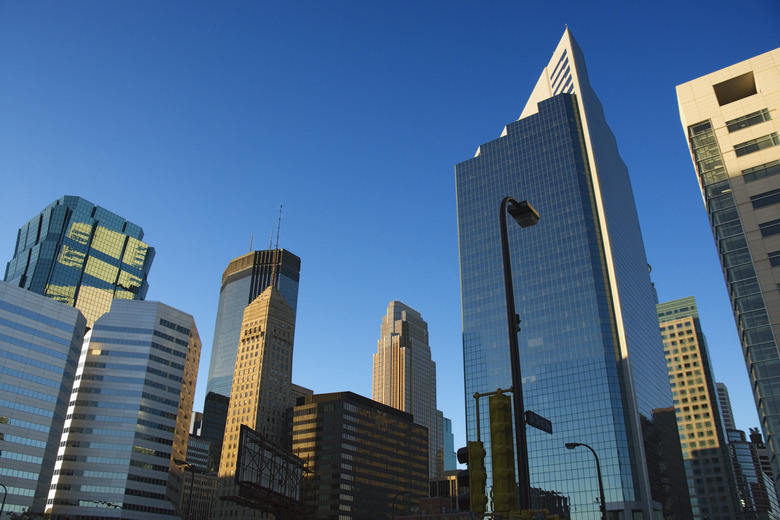Advantages And Disadvantages Of Curtain Walls
A curtain wall is a protective wall affixed to the outside of a building to protect the structure. During medieval times, curtain walls were one of the most important defense structures used in protecting castles, and today they serve a more basic protective purpose. Whereas, during the Middle Ages, curtain walls were meant to keep out invaders, today's curtain walls are build to keep out the elements such as rain and wind, and to help stabilize the structure. Largely used in commercial building designs, curtain walls serve an important purpose, but there are associated disadvantages to having them in place.
History
History
During the Middle Ages, many castles were constructed using a Motte and Bailey design which consisted of a keep, or tower and a courtyard individually surrounded by a protective wall. This protective wall was often called a stockade or a curtain wall and these walls ranged from 6 to 20 feet in thickness and were built up to 45 feet high. Originally constructed from timbers, curtain walls eventually came to be built from stone, which made them less susceptible to rot and more difficult to scale and penetrate.
Modern Functions
Modern Functions
In modern architecture, a curtain wall is typically a thin wall constructed of glass, metal or stone framed in aluminum that is attached to the outside structure of a building. The curtain wall does not carry the load for either the roof or floor of the building; it simply serves to keep out air and water and to reduce sway induced by wind and seismic activity. Connected to the floors or columns of the building, a curtain wall transfers horizontal loads induced by wind and gravity to keep the structure stable.
Advantages
Advantages
Before steel and reinforced concrete became common building materials, a building's facade typically supported the load of the whole structure. One major advantage of today's curtain wall is that it can be constructed from much lighter materials like glass, which allows for the filtration of natural light into the building. In addition to preventing air and moisture from entering the building, curtain walls can also act as a fire stop, slowing or preventing the spread of fire between floors of the building.
Disadvantages
Disadvantages
One of the major disadvantages of curtain walls is the need for regular maintenance. In order to keep out moisture and wind, a sealant must be applied to the perimeter, and this sealant must be replaced every 10 years or so. Another major disadvantage of curtain walls is the cost and time required to install them. Curtain walls utilizing the stick system, for example, require a great deal of time to assemble, and their performance depends on the quality of the installation. Unitized curtain walls consist of factory-assembled frames which reduces installation time and cost but incurs greater costs for shipping and storage.
